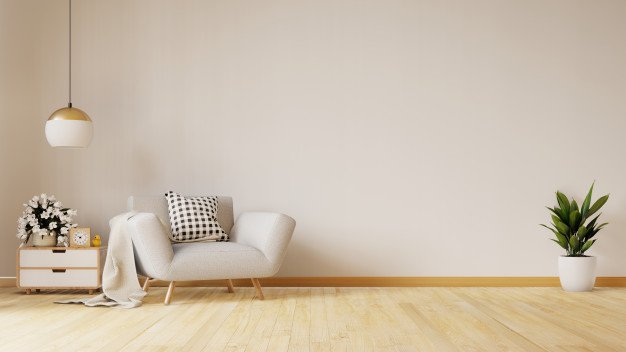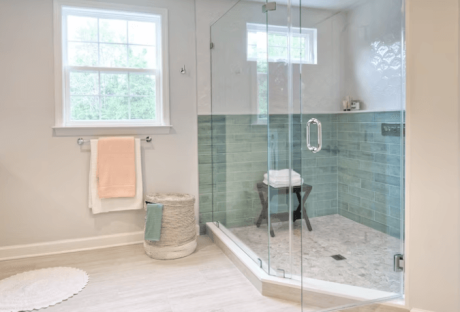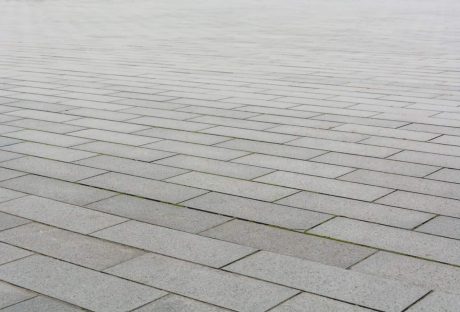A busy household is one with a lot of love. Whether it is a lot of people all living together in one home or just neighbors and friends dropping by at all hours of the day and night, keeping up with a barrage of feet across your floors can be difficult. A stylish wood flooring might be exactly what you need in terms of aesthetics but what can you do in terms of protection? Keep reading to find out.
Choose the Right Floor:
Protecting the floor actually begins a long time before it is even laid. One of the most crucial decisions you can make when it comes to choosing the right flooring comes from which wood you pick. If you opt for a design which has been treated to be resistant then you know it will be a little longer lasting than something else you could choose.
You should also choose something on the neutral side so it will always be in style no matter how much you change the rest of the room about. The right color will blend in with everything and can even help to disguise stains depending on what you choose.
Enforce “Shoes Off”
Yes, you might have to be one of those households which enforces a shoes-off rule. If you want to maintain clean floors as often as possible, you need to ensure that no-one is trekking mud and dirt through your home on the soles of their shoes. Some people only like to use this rule when they have carpets, but it can also be used when you have wood flooring you want to keep pristine. Keep a collection of slippers just for guests if they aren’t comfortable walking around in just socks.
Use Protector Pads on Furniture:
Head to any hardware store or even your local supermarket, and you will be able to find a square of felt which you can cut up and used to cushion the feet of your furniture. This can be bought either in the pre-cut shapes or you can do it yourself. If you have furniture like chairs which frequently get dragged along your floor, this felt will help to protect the floor. Long scores and other damage on the floor can be extremely difficult to fix and you should instead try to focus on preventing such damage.
Put the pads on any furniture will be resting on the floor even if it will not be moved often. It might not be the most convenient for you to try to place the pads on your heavy dresser, but it will be worth it if it means your floor won’t be damaged. Just the natural shift of people walking around the house might be enough to cause it to move and damage your floors.
Wipe up Spillages ASAP:
Wood floors are great as they do not require that much in the way of maintenance but there is one thing you must be exceptionally vigilant about. This is spillages from liquids; something which might happen quite a lot in households with a lot of people. From drinks being dropped to vases getting knocked over, there is plenty of scope for things being spilled on your beautiful wooden floor.
If this spillage is left unattended, you can risk the wood warping and become irrevocably damaged. There is not really any way to correct wood once it has warped so it is easier to just be vigilant and clean up the spills as they happen instead. If you have young children, make sure that you instill in them the knowledge that spilling on the floor is not wrong if it is an accident, but it must be cleaned up as soon as possible.
Gentle, Regular Cleaning:
A wood floor can look beautiful, but you need to be very careful about what you use to clean it if you want it to remain as good as possible for the longest amount of time. First of all, a regular sweep will work wonders. Build one into your routine. If you do a daily clean down or tidy of the room with the wood floor just to keep things nice and neat, running around with a broom is not a massive addition to your cleaning routine.
When it comes to something a little more, all you need is a good microfibre mop. These are brilliant as you can really wring them out to ensure that they are merely damp as opposed to wet. You should not want to use anything too wet to avoid the warping problem mentioned above. A damp microfibre mop and a suitable cleaner which can be used on wood flooring are all you need to ensure that the wood is left sparkling clean.
Read more: Use Floor Polishing For Keeping Your Flooring Looking New
A Stylish Rug or Two:
If your wood floor is in somewhere with a lot of traffic, for example, a hallway or the kitchen, then you might want to take an extra precaution to protect the floor through the use of a rug. This will protect your floor from some additional wear and tear and can help to prevent those tell-tale marks which slowly appear from lots of feet trailing through the same area.
What’s more, it is incredibly easy to find rugs to match whatever style you might have in a room. With a load of different textures and designs to choose from, you can very easily find the perfect rug to match your room and rest knowing that the floor underneath will stay protected that little bit longer.
Find the Right Floor for You Today:
If you have been holding back on installing a wood floor because you think your household is too busy for it, you need to correct that mistake now. There are plenty of options for you even if you have a house bursting at the seams with loved ones! With the tips mentioned above, there is no reason why you cannot have a beautiful wood floor in your home even if you have visitors at all hours of the day and night.
Read Also:
























